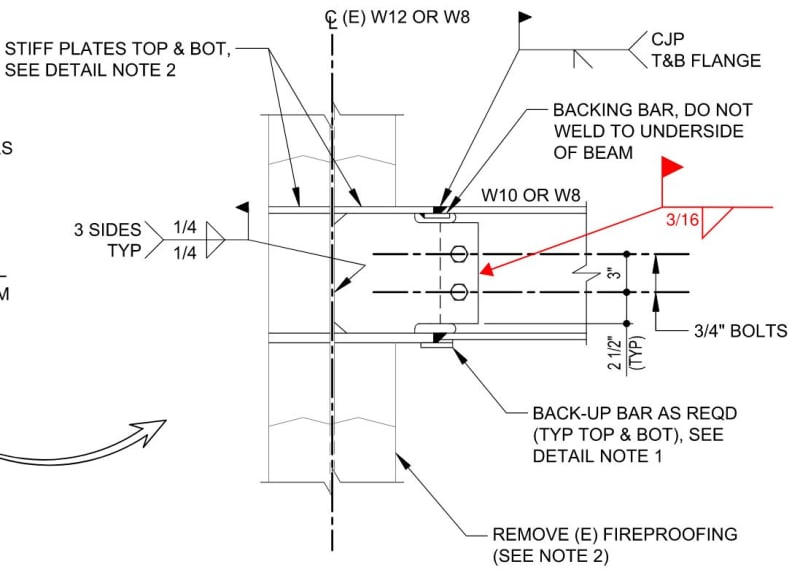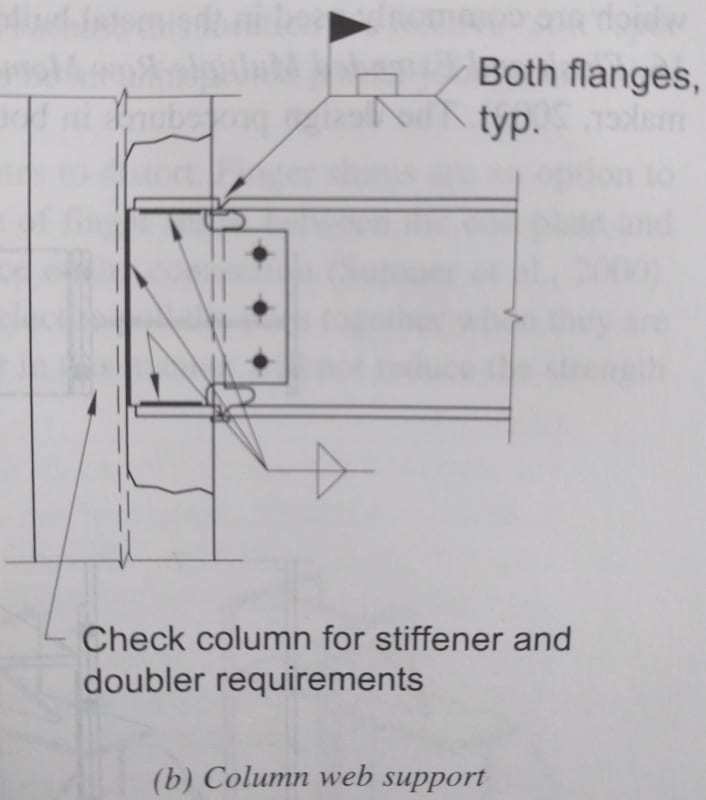Kom3
Structural
- Nov 20, 2019
- 37
Hi, I am wondering if the beam web needs to be welded to the shear plate for an OMF connection. If yes, which provision requires this?
Regards,

Regards,

Follow along with the video below to see how to install our site as a web app on your home screen.
Note: This feature may not be available in some browsers.
Modern Steel Article said:A common misconception is that slip-critical joints are necessary at the web connection to limit the vertical movement of the beam after the flanges have been welded. This would presumably prevent secondary bending and shear stresses in the beam flange in the area between the column flange and the weld access hole. However, the tests showed no decrease in strength when bearing joints were used. Furthermore, most of the tests with slip-critical joints had slip occur at some point in the testing, effectively rendering the web connection a bearing joint anyway.
Modern Steel Article said:...tests have shown that these connections can carry moments greater than the plastic capacity of the beam, even when combined with shear loads approaching the shear yield strength of the beam.

